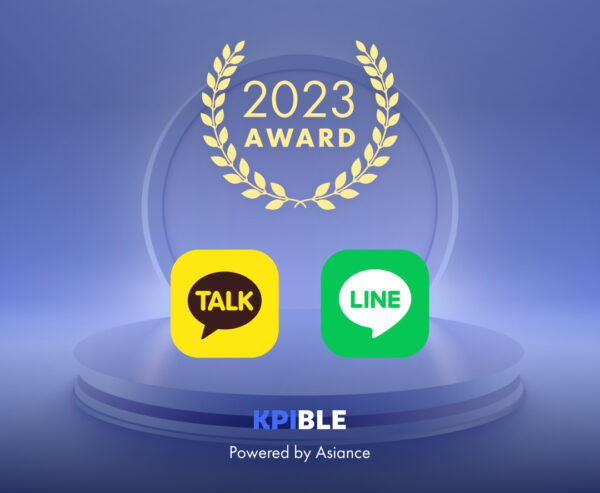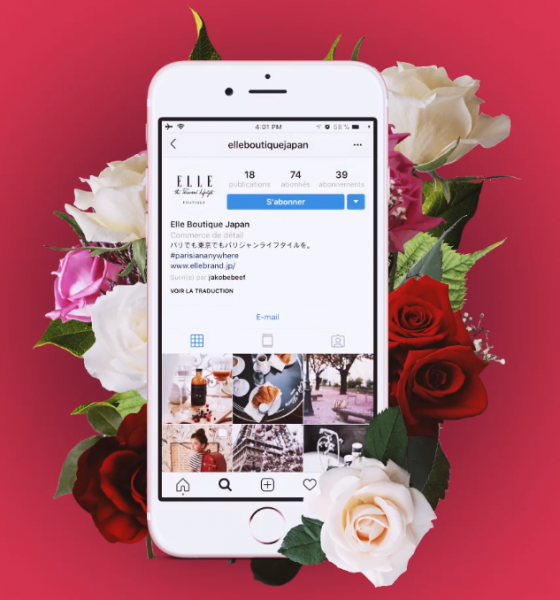Sourced from: HTTPS://WWW.FACEBOOK.COM/JPN.LINE/PHOTOS/A.203330366442721.41809.129790443796714/949937221782028/?TYPE=3&THEATER
A COMMUNICATION TOOL CRAFTED FROM A NATURAL DISASTER
Over 97% of smartphone users use KakaoTalk in Korea, and it claims a very strong presence in the mobile environment. Likewise, to Japanese smartphone users, LINE and everyday life are virtually inseparable. As soon as LINE launched in June 2011, it became the foundation for communication among anyone living in Japan. LINE eventually became so prominent in the Japanese market that younger smartphone users tend to ask for LINE IDs before they do for their actual phone numbers.
The LINE application also has a presence in several regions outside of Japan – particularly Taiwan, Thailand, Indonesia. The MAU (Monthly Active Users) of those four countries is now more than 167 million. When only referring to Japan, the domestic active users is over 66 million so as 70.8% for DAU (Daily Active Users). Similar to Kakao Talk, with its high number of active users, it became commonplace for business owners to employ LINE as one of their marketing tools in Japan. Before diving into business marketing for LINE, it’s crucial to understand the background of the application.
NAVER Japan, a company that specializes in search engine services, began developing LINE in 2010. LINE had initially begun as a project that consisted of a team of just three members to bring a more powerful social service in Japan. The team wanted to develop a program that was “mobile application” and “both real and closed.” While the team deliberated on what kind of social service it should be, they ultimately chose the keywords “messaging service” and “photo-sharing service” to represent the sort of application they wanted. The original plan for the team was to launch the photo-sharing service first.
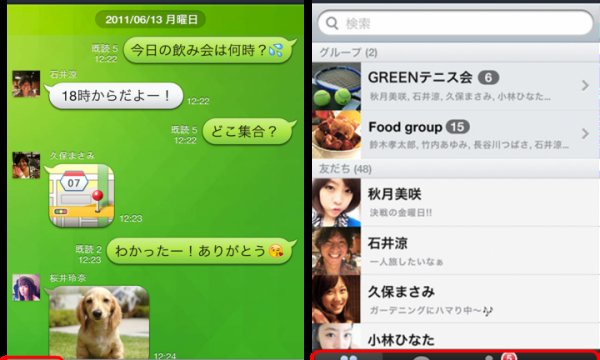
The team had begun developing screen designs when the Great East Japan Earthquake occurred on March 11th, 2011. At that time the only way to communicate from long distances was by either sending text messages or phone calls, which offered little help as lines became too busy with thousands of people trying to send calls and texts simultaneously among the disaster. The project team discovered the demand for a messaging service in Japan and immediately began developing the application in late April 2011. The application came about as a result of the great east Japan earthquake.
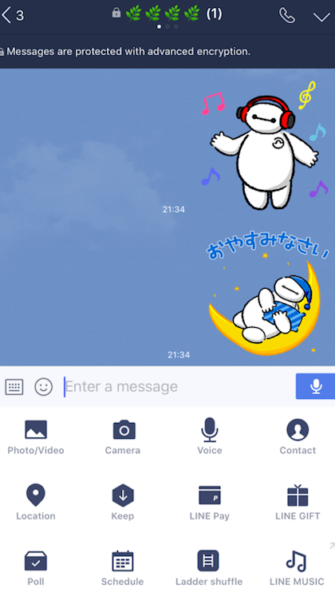
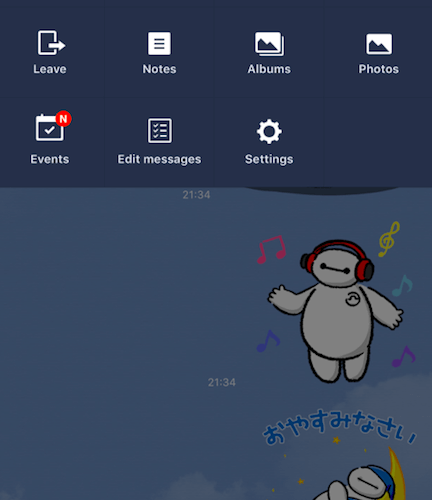
THE INITIAL INTENT OF DEVELOPING LINE WAS TO MAKE AN APP FOR SHARING MESSAGES TO FRIENDS
In a rush to launch the app as soon as possible, LINE was released on June 23rd, 2011. Since the team had prioritized a speedy release, the first version of LINE only offered the messaging function. At this time there was no messenger application originally developed in Japan, as people in Japan generally used the basic text and call features offered from their carriers, such as Docomo and Au. As an application, LINE became a very innovative messaging platform for Japanese smartphone users, who were all surprised at the ease of managing contacts and sending messages without needing to categorize each one. LINE had achieved 10 million downloads soon after release, making it a success from the get-go. Such achievements are easier said than done.
Because the initial release of LINE was an application that only offered the messaging function, the next hurdle they faced was how to build its presence and recognition Japanese market as the mainstream messaging application. Through steady improvements on features and promotions, LINE had steadily increased the user base. In October 2011, four months after the product launch, free-calling functions and stamps (also known as emoticons) that are commonplace today were added to LINE. On top of being a mobile messenger, LINE is also an effective marketing tool for Japanese businesses.
NOW AS A CREATIVE AND INFLUENTIAL MARKETING TOO
LINE had been continuously increasing their daily user count as more people began using LINE as their main communication platform, which eventually overcame text messages the most popular means of communication. Businesses have taken notice and began integrating the app as a powerful tool in their marketing mix.
LINE’s messaging function began to evolve as Japanese businesses began using LINE as an effective marketing tool. One of the most popular functions for business profiles on LINE is known as Business Connect. It enables companies to communicate more closely with customers by sending personalized messages to their fans or communicate interactively with them with chatbots. Besides that, LINE stamp marketing has also become a core marketing tool on LINE. By making LINE users download free LINE stamps of a brand, they are automatically added to the business’s LINE account as their friend. Not only do LINE stamps convey a light nuance of advertising, but they can lead to improvements in brand awareness. For LINE users, stamps have become commonplace in their conversations on the app – sometimes completely replacing messages as they can often convey the perfect message on their own.
BUSINESS CONNECT
LINE Business Connect is a service that enables companies to send one-to-one personalized messages to different users. Compared to official business accounts or LINE accounts, which can approach a large group of people all at once, the Business Connect service enables business owners to send a message that caters to each one of their user’s preferences and circumstances. The service also enables customers to send messages to the business account and get responses, which are automated by recognizing keywords in the message.
Examples of tailoring one-to-one messages from Business Connect are:
1. Categorized Messages: Sending a personalized message only targeting a certain category of people such as “women, in their 30’s, living in Tokyo”, based on the brand’s CRM database
2. Loyal Users: Sending a personalized message only for targeting loyal users who frequently use the company’s service such as sending a coupon only for premium members
3. Trigger Base: Sending ‘real-time’ personalized information such as notifications of user’s favorite items back in stock or recommend items based on the user’s past behavior
4. Recommendation: Sending a personalized recommendation of items or services based on the user’s past behavior
The following cases are unique examples of companies take advantage of these features:
Kuroneko Yamato is Japan’s largest door-to-door delivery service company, with a market share of 41%. In their LINE official account, followers can receive various services through LINE by linking LINE ID (@yamato_transport) with the ‘Kuroneko ID’ of the company member service.
You can receive the delivery times of each package and notifications of attempted deliveries through the chat function. In addition, you can also simply request a redelivery by tapping the customized UI, where you can also receive receipts and check the fees for the courier service.
Also, there is a unique automatic return function installed onto the app. If you send them a message with Meow (‘にゃ’ in Japanese) put at the end of the sentence, they will reply as if they were themselves a cat, as the meaning of their company, ‘Kuroneko,’ is ‘Black Cat’ in Japanese. Such small features can be great PR for the company.
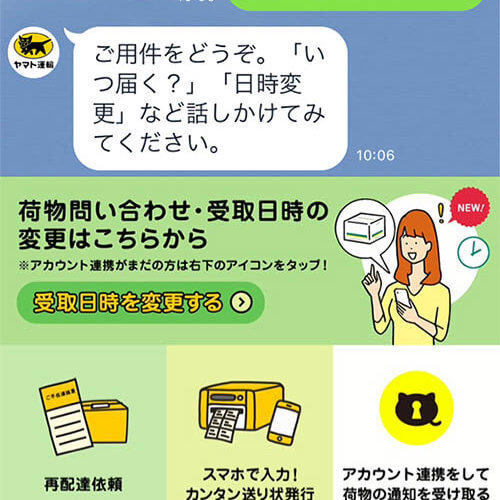
Nintendo’s LINE official account (@nintendo) has a unique automatic return function. Message receiver is Pinocchio, another popular character from the Nintendo family. If you will send a message to Pinocchio, it will reply through 2,820 different prepared responses. It also has various auto-reply functions that reply with a voice message or send Nintendo’s game character’s picture when you send a message typing the character’s name in the text.
Besides, they not only provide the latest updates through Pinocchio but can also play the game by pushing the blue button on the right side of the chat room. The keyboard transforms into blocks that when you press, different items appear from behind it – resembling Super Mario Bros.
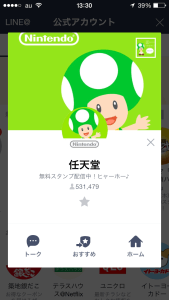
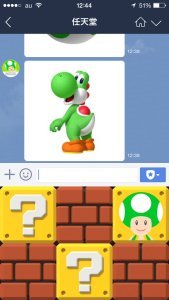
If you are interested, download LINE and talk to Pinocchio!
LINE STAMP MARKETING
LINE sticker marketing includes elements that increase the number of friends by delivering stickers and make products even more likable.
Also, they have their own characters in each company or product. It is effective in the marketing strategy because it can raise awareness using such characters, and it can also be used as PR for new products.
As you can see in the pictures below, it is clear that the Japanese people love ‘Kawaii culture’. Some companies deliver not only the company’s characters but also a collaboration with existing characters and celebrities.
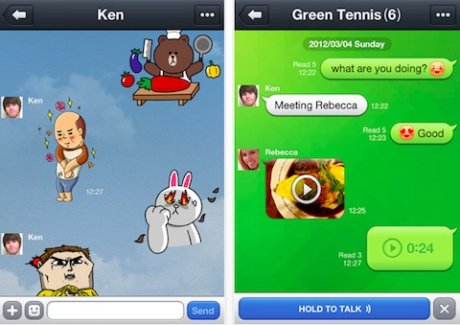
LINE faced an urgent situation following the 3.11 East Japan Great Earthquake in Japan, which had consequently accelerated the development of the messaging application in Japan. Even though LINE was first released as a better and easier communication tool for emergency situations, it’s momentum has carried it to encompass almost every aspect of the mobile world for people in Japan.
Not only are the services for creating conversations between users and business owners, currently LINE offers numerous contents and services such as games, music, movies, comics, news, weather, a payment system, job page, food delivery service, online shopping, taxi-hailing, and phone calling to landline phones and more – all from the same company. LINE is now not just a mobile messaging application – but an essential app for the daily life of Japanese people.




